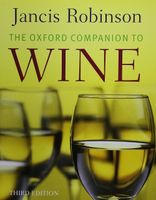Advertisement
Food and Wine Matching: Some specific reactions
Published 2006
The wine merchant’s maxim ‘buy on an apple and sell on cheese’ has a sound basis in gustatory fact. Fresh, uncooked apples, like most fruits high in both sweetness and acidity, make many wines taste thin and metallic; any wine that impressed when tasted with an apple must have been seriously good. Hard cheese such as cheddar, on the other hand, tends to make wines taste softer and fuller. Strongly acidic foods such as dishes containing lemon juice and vinegar were for long cast as villains in terms of serving with wine, but thanks to sensory adaptation can make a slightly too acid wine taste fuller and more agreeable (while reacting badly with top-quality wines). Raw garlic can react with water to produce a burning sensation in many palates, while an acidic drink such as wine (Provençal rosé with aïoli) neutralizes the garlic and refreshes the palate. Hanni has demonstrated that, to the majority of palates, freshly ground pepper is a sensitizing element that may ruin the nuances of a fine, old wine, but can flatter a young, light-bodied wine by making it taste stronger, fuller, and more complex.


